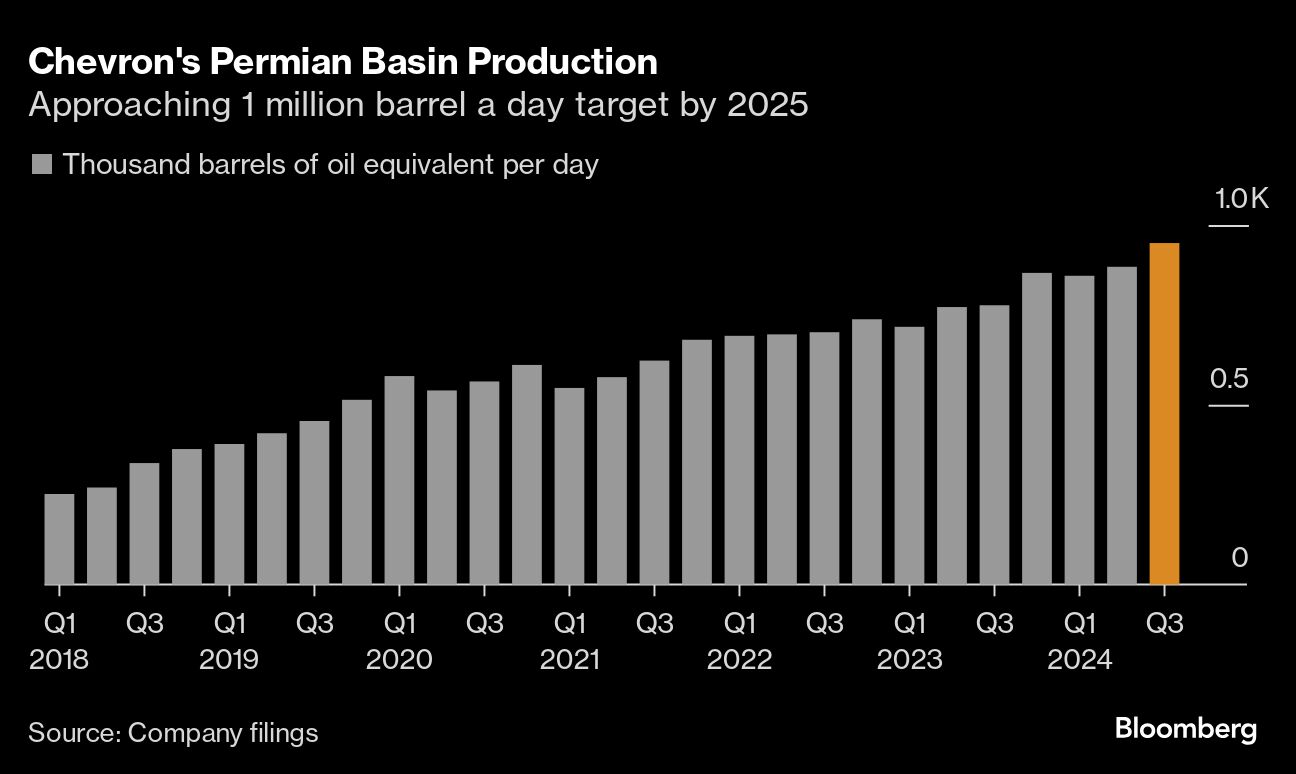Chevron Slows Permian Growth in Hurdle to Trump Oil Plan

(Bloomberg) -- Chevron Corp. plans to slow production growth in the biggest US oil field next year in the most definitive sign yet that President-elect Donald Trump faces an uphill battle to ramp up American energy output.
Most Read from Bloomberg
Chevron will reduce capital expenditures in the Permian Basin to between $4.5 billion and $5 billion in 2025, a drop of as much as 10%, the company said in a statement Thursday. Globally, the oil explorer expects to spend about $17 billion compared to $19 billion this year in the first budget cut since 2021.
“Production growth is reduced in favor of free cash flow,” Chevron said in the statement.
Analysts at Goldman Sachs and Truist Securities raised their price targets for Chevron shares after the company announced its plan. The stock fell 0.5% before the start of regular trading in New York as oil prices slid for a third day.
The Permian region of West Texas and New Mexico has been one of the world’s fastest-growing sources of oil over the past decade and now pumps more than 6 million barrels a day, putting it ahead of Iraq, the No. 2 OPEC producer. Independent drillers drove the initial shale revolution but supermajors such as Chevron eventually glommed on to the basin’s potential.
The slowdown will be welcome news for the Organization of Petroleum Exporting Countries and its allies as they struggle to contain a glut of crude from the US and elsewhere that has pushed oil prices down 18% since the end of April. It’s also a reality check for Trump who has promised to unleash American oil production as part of his “Drill, Baby, Drill,” energy policy that he pledged will cut energy prices in half.
West Texas Intermediate fell 0.4% to $68.30 in New York on Thursday, brining the 12-month loss to almost 5.6%. US shale is profitable at such prices but absent more robust demand growth most executives prefer to return cash to shareholders and grow through acquisitions rather than spend money ramping up output.
Chevron still plans to increase production from the Permian next year, but growth will significantly decelerate from the 15% annual increase since 2021 as the oil driller nears its million-barrels-a-day target.
Chief Executive Officer Mike Wirth last month indicated production from the basin will stop growing and plateau in the late 2020s to “really open up the free cash flow.” The company’s overall US production is likely to increase until then in part due to projects in the Gulf of Mexico over the next few years.
Breaking news
See all






